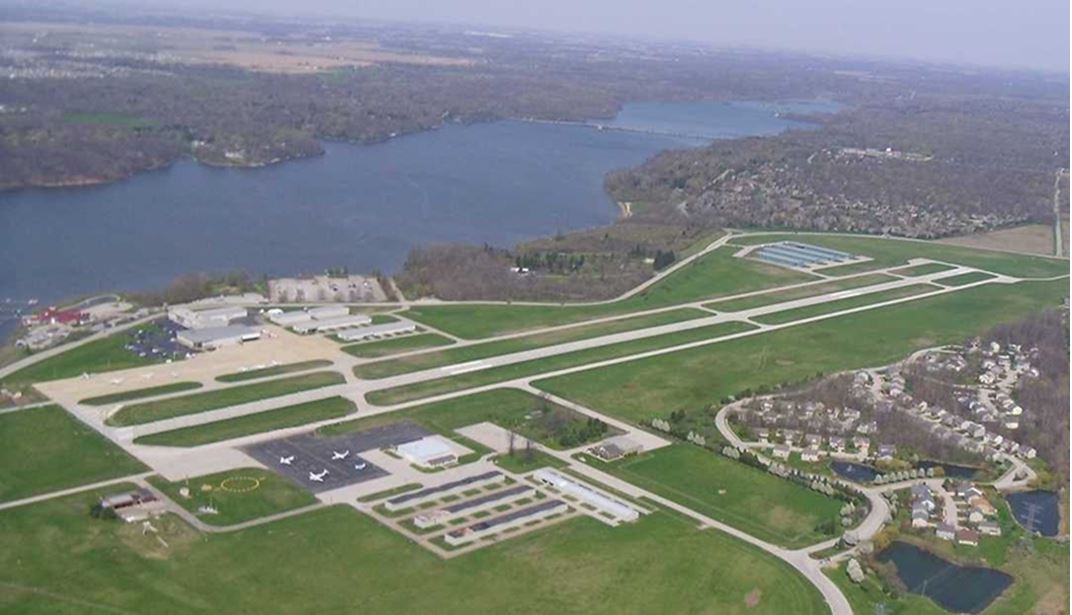Indianapolis Airport Authority’s Eagle Creek Airpark Taxiway B Project Earns Envision Bronze Award for Sustainability

The Indianapolis Airport Authority’s (IAA) Eagle Creek Airpark Taxiway B project in Indianapolis, Indiana, has earned the Envision Bronze award for sustainable infrastructure. This is the first taxiway project to earn an Envision award, and the second project at a general aviation airport to achieve this recognition.
The Eagle Creek Airpark Taxiway B project involves the rehabilitation, widening, and relocation of Taxiway B. The main objectives of the project are to meet Federal Aviation Authority (FAA) design standards, improve the condition of the pavement, and achieve required separation standards. The project also involves the replacement of existing lighting with more energy-efficient LED lighting.
“ISI is pleased to present the Envision Bronze award for sustainable infrastructure to the Eagle Creek Airpark Taxiway B project,” said Melissa Peneycad, ISI’s Acting Managing Director. “The Indianapolis Airport Authority and their project partners are leaders in sustainability as evidenced by their early adoption of Envision as a framework to help guide them to more sustainable decision-making on this project.”
The project design was led by Woolpert with C&S Engineers, Inc., serving as Envision Administrator. The team worked in close collaboration with the IAA to deliver this award-winning, sustainable project.
“The approach to this project is consistent with our commitment to sustainability,” said Mario Rodriguez, IAA executive director. “Our main terminal was the first airport in the country to earn LEED certification, and it only follows suit that our commitment to sustainability should expand to our general aviation airport projects as well.”
C&S’s Carly Shannon notes “a typical project design offers numerous ‘off ramps’ from the path to sustainability. The IAA recognized the potential benefits, both short and long term, to staying on track and maintained their commitment at each step of the process. This resulted in a better project for the airport, its users, and the community.”
The Envision sustainable infrastructure rating system assesses sustainability in five categories: Quality of Life, Leadership, Natural World, Resource Allocation, Climate and Resilience. These contribute to positive social, economic and environmental impacts on a community during the planning, design and construction of infrastructure projects.
Key sustainable features that contributed to this project earning Envision Bronze include:
Project Planning and Coordination
Thorough project planning and coordination between the IAA and the FAA not only helped the team determine the appropriate design standards to apply, but also enabled the project to meet facility requirements and safety objectives while limiting construction costs, land disturbance, and community impacts.
Commitment to Sustainability
C&S was engaged to provide recommendations that would contribute to the project’s long-term durability, resilience, and sustainability. C&S and the design team then worked collaboratively to integrate selected strategies into design and construction documents. The project team’s early decision to pursue Envision verification is a testament to the team’s leadership and commitment to sustainability.
Efficient Use of Resources
The decision to use full-depth reclamation (FDR)—a process that involves rebuilding the taxiway by recycling the existing pavement instead of removing it and bringing in all new materials—provides clear environmental and operational benefits, including reducing the need for virgin materials and minimizing trucking and associated fuel/emissions. Specification of FDR also demonstrated leadership as this is not commonly used at airports throughout Indiana. The use of FDR required a modification of standards through the FAA since this is not a standard specification.
The project also uses energy-efficient LED lighting. The use of LEDs versus standard incandescent lighting fixtures will reduce energy consumption and minimize maintenance and replacement costs over the life of the project.


